Award of Excellence
The Pioneers Oral History Series
The Cultural Landscape Foundation, Washington, D.C. USA
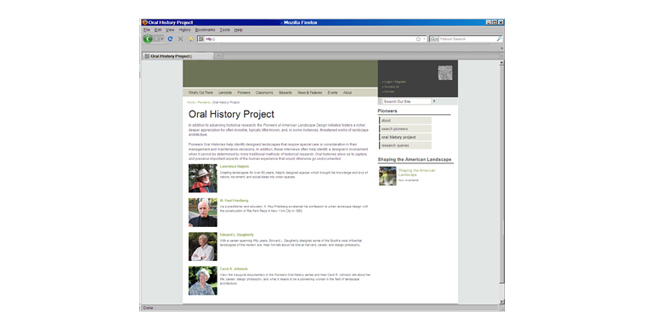 Close Me!
Close Me!Oral History Series Splash Page
Download Hi-Res ImagePhoto: The Cultural Landscape Foundation
Photo 1 of 9
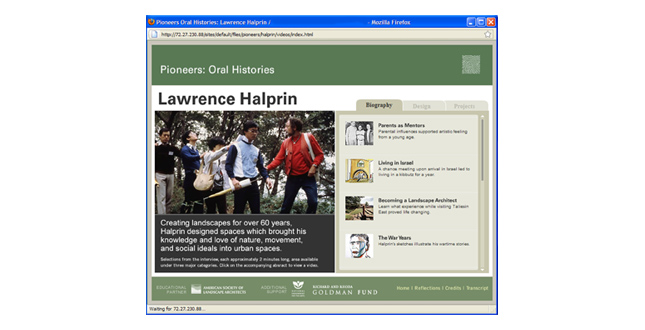 Close Me!
Close Me!Lawrence Halprin, FASLA Oral History
Download Hi-Res ImagePhoto: The Cultural Landscape Foundation
Photo 2 of 9
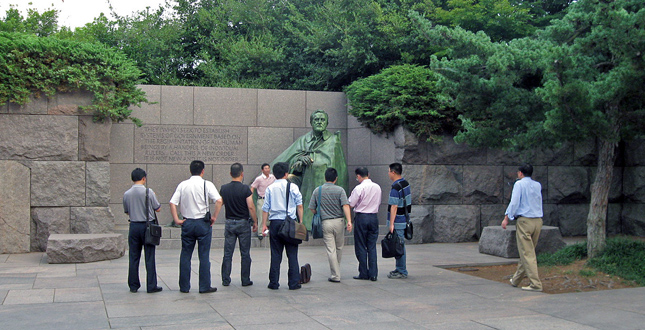 Close Me!
Close Me!The Franklin Delano Roosevelt Memorial, Washington, D.C. was one of Lawrence Halprin’s favorite projects.
Download Hi-Res ImagePhoto: The Cultural Landscape Foundation
Photo 3 of 9
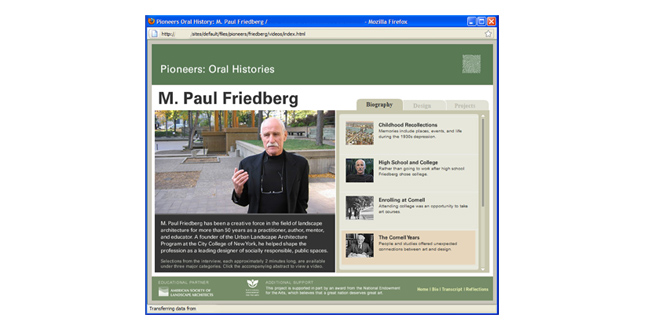 Close Me!
Close Me!M. Paul Friedberg, FASLA, Oral History
Download Hi-Res ImagePhoto: The Cultural Landscape Foundation
Photo 4 of 9
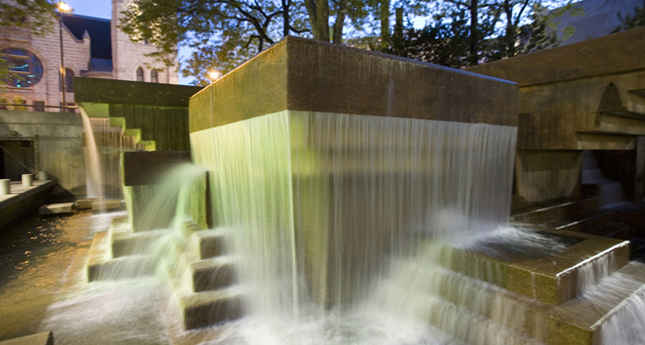 Close Me!
Close Me!Peavey Plaza, Minneapolis, designed by M. Paul Friedberg, FASLA.
Download Hi-Res ImagePhoto: © Keri Pickett
Photo 5 of 9
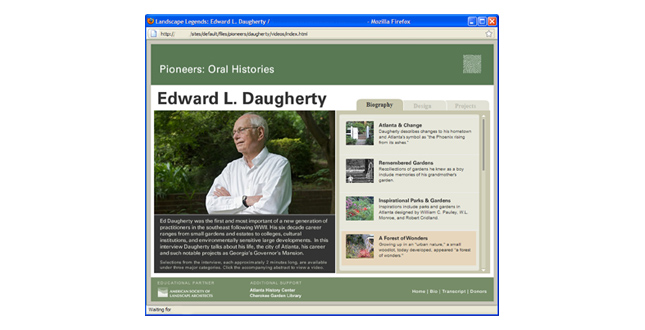 Close Me!
Close Me!Edward Daugherty, FASLA, Oral History
Download Hi-Res ImagePhoto: The Cultural Landscape Foundation
Photo 6 of 9
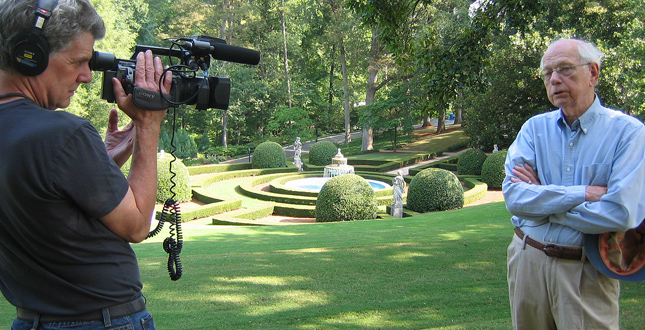 Close Me!
Close Me!Ed Daugherty, FASLA, filmed by James Sheldon at the Governor’s Mansion, Atlanta.
Download Hi-Res ImagePhoto: The Cultural Landscape Foundation
Photo 7 of 9
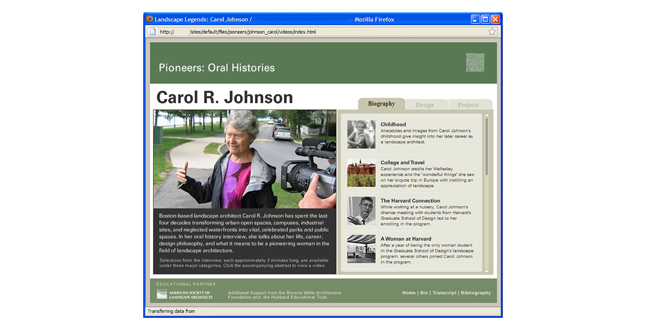 Close Me!
Close Me!Carol R. Johnson, FASLA, Oral History
Download Hi-Res ImagePhoto: The Cultural Landscape Foundation
Photo 8 of 9
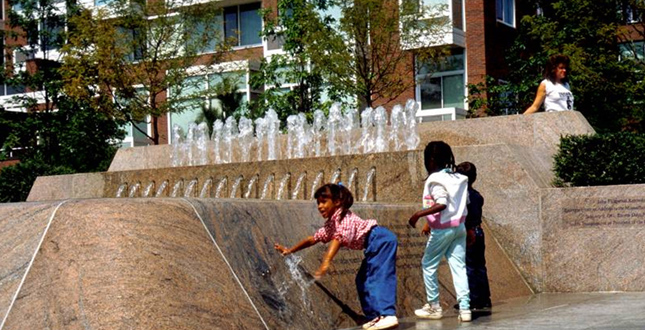 Close Me!
Close Me!Children enjoy the fountain at John F. Kennedy Park, Cambridge, Massachusetts, designed by Carol Johnson, FASLA.
Download Hi-Res ImagePhoto: The Cultural Landscape Foundation
Photo 9 of 9
Project Statement
The Pioneers of American Landscape Design Oral History Series is an ever-growing collection of free, in-depth, web-based interviews with acclaimed American landscape architects. Each oral history documents and preserves the career and life of a specific practitioner. It is designed for use by landscape architects, stewards, researchers, students, and the general public; to provide knowledge and inspiration; and, to introduce young people to diverse role models in the profession.
Project Narrative
—2010 Professional Awards Jury
The Pioneers Oral History Series is a free, web-based offshoot of the Pioneers of American Landscape Design book series, and buttresses "What's Out There," a new, searchable database of America's designed landscapes; collectively they highlight and promote the field of landscape architecture and the lives, careers and works of its practitioners. Individually and together, the website offerings and the books are designed for landscape architects and allied practitioners, stewards of specific sites, researchers, students, and members of the general public curious about a park in their neighborhood, or places they could visit while traveling.
The oral histories are in depth and emphasize having the subjects tell their stories in their own words. Each new oral history preserves vital information and recollections from its subject and adds to a broader narrative about the totality of American landscape architecture.
The richly illustrated series represents a carefully executed videotaped collaboration between interviewers and interviewees. Detailed lines of questions, derived from the Oral History Association's "Oral History Evaluation Guidelines," enables each subject, accompanied by videos of built works, studio interiors and other relevant settings, to share their stories. The focus is on the landscape architect, and the selected visuals spotlight their work, and the social, cultural, and natural "contexts" surrounding their design legacy.
Each oral history covers the same overarching themes: biography, design, and projects; and, is comprised of up to 40 carefully edited three-to-four minute, self-contained video segments, with a total oral history running up to two hours in length. Supplementing each oral history is a searchable, downloadable transcript; a biographical profile; annotated bibliography of writings by and about the designer; a list of landscapes with addresses if publicly accessible, and personal recollections written by those who worked with the designer (for example, 18 personal accounts from clients, family and colleagues accompany the Halprin oral history, including recollections from Shlomo Aronson, Richard Haag, and John Parsons).
Along with Halprin, completed oral histories have been posted for Carol Johnson, Edward Daugherty, and M. Paul Friedberg, with each subject offering tremendous insights into their own work, influences and life experiences. Halprin, for example, recalled the vivid social backdrop of extreme racial strife and impassioned calls to heal the community's wounds in his description of the 1966 opening day events for Portland, Oregon's sequence of open spaces. Edward Daugherty described what it was like to return to the South after graduating Harvard in 1951and establish a professional practice in racially segregated Atlanta. These oral histories allow us to capture and preserve important aspects of human experience that might otherwise go undocumented.
There is urgency to the project, given the loss of so many luminaries over the past few years. Fortunately, filming for the most recent oral history, that of Lawrence Halprin, was completed a year before his passing (sadly, Ed Stone, Jr., passed away just two weeks before filming of his oral history was to begin). Along with the completed oral histories, extended interviews have been done with Stuart O. Dawson, Richard Haag, Dan Kiley, Bob Royston, Ruth Patricia Shellhorn and James van Sweden.
For researchers these oral histories foster a deeper understanding and act as excellent primary resource material, especially in documenting historically significant postwar American-designed landscapes. Additionally, they provide a richer, deeper appreciation for important, though sometimes little known and, in some instances, threatened works of landscape architecture. The two primary goals of the series are: (1) instill the idea that the landscape has value by making these designers and landscapes visible, thereby encouraging sympathetic management practices, and (2) expose the public and young people to the art and the profession of landscape architecture.
These goals are being met: The creation of the first oral history for Carol Johnson, helped reverse two decades of inappropriate management decisions at John Marshall Park in Washington, D.C.; and, Halprin's, two most significant Bicentennial projects—Freeway Park in Seattle (the first park over a freeway in the U.S.) and Heritage Park in Fort Worth, Texas—which faced uncertain futures, today have been saved and recognized as significant examples of our postwar landscape heritage. In addition, great emphasis is placed on disseminating the oral histories to universities and other educational institutions to raise the visibility of landscape architecture as a viable professional option.
Our website, and those of our numerous partnering organizations, is our main source of dissemination. In 2009, traffic to our website grew more than 33 percent, the fifth consecutive year it grew at that pace. Overall, the site registered 5.6 million Web hits and over 600,000 unique visitors, representing an ever-growing and wide-ranging audience. Based on targeted evaluation and outreach done to date, we know that the audience that accesses the oral histories is broad and includes middle and high school students and teachers; undergraduate and graduate students; architecture, landscape, historic preservation, and history professionals; and, the general public. Additional outreach is done via our free, monthly e-newsletter, currently sent to more than 4,000 subscribers. Our educational partners have been very helpful in promotion. The Atlanta History Center, an educational partner in the Daugherty feature, integrated his oral history into educational kiosk in their recent Edward Daugherty exhibition/retrospective. We also post previews of these histories on our dedicated YouTube site, which successfully drives web traffic.
Project Resources
Educational Partner
American Society of Landscape Architects
Production
Charles Birnbaum, FASLA, Executive Producer
James Sheldon, Director/Editor
Nancy Slade, Assistant Editor
Shirley Veenema, Assistant Editor
Charles Birnbaum, FASLA, Interviewer
James Sheldon,Videographer (oral histories — Carol Johnson, FASLA, Edward Daugherty, FASLA, M. Paul Friedberg, FASLA and the FDR segment in Lawrence Halprin, FASLA oral history), Tom Fox, Principal, SWA Group, Inc., Videographer (Halprin Oral History)
Nancy Slade, Project Manager
Shirley Veenema, Writer
Bill Tatum, Video Transfer (Halprin)
Mark Oviatt, Oviatt Media, Website Interface and Design
Additional Support
National Endowment for the Arts
Richard and Rhoda Goldman Fund
Atlanta History Center, Cherokee Garden Library
Beverly Willis Architecture Foundation
Hubbard Educational Trust






